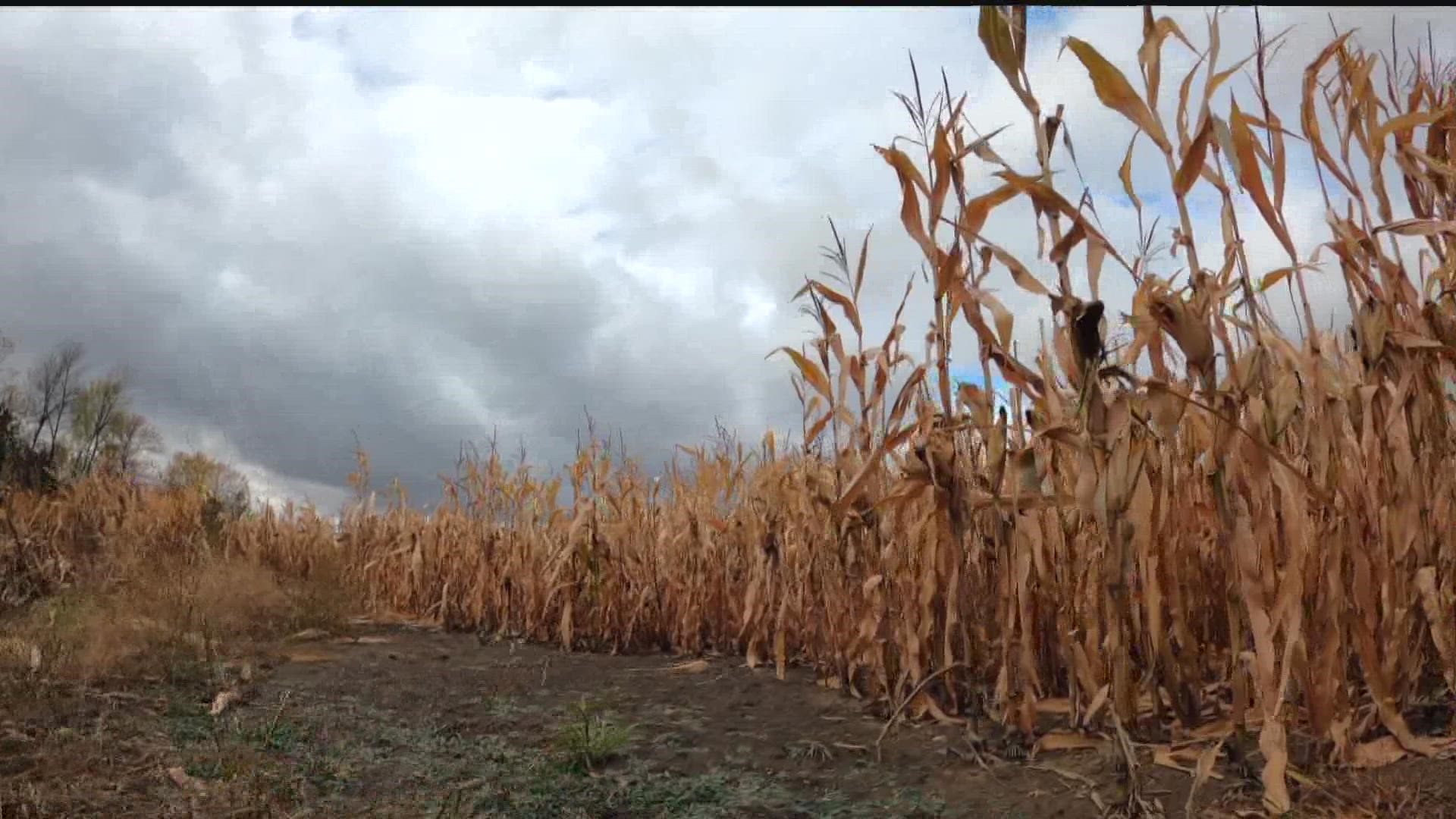DAYTON, Minnesota — Despite the shock of seeing some snow Friday morning, it's exactly what Minnesota needs to combat the extreme drought some parts of the state are facing.
The past two weeks are the first time this year that any portion of Minnesota has been in extreme drought, according to the Department of Natural Resources (DNR).
For local farmers, the drought has had an impact on some of their crops. The season, though, was a weather rollercoaster, starting with a wet spring that led to a late planting season.
"You and I talked this spring and there were lakes in our fields," said Brad Dehn who runs Fernbrook Farms. "So, yes, it can change."
Then, a summer so dry came around that the National Weather Service said September ended up being the driest on record in the Twin Cities.
"You're kind of drawing on the bank reserves, if you will, and at some point, if the bank goes empty, then things can get a little dicey," Dehn said.
The DNR reports that some areas need up to eight inches of rain to replenish water resources. Drought can persist over several years and the DNR says Minnesotans should be mindful of water conservation even now.
But Friday's early snowfall could help.
"The sub soil conditions are quite dry," Dehn said. "We've had dry drought all summer long so in the big picture the snow is not a bad thing."
Dehn says an early snowfall can shield the soil from frost that can absorb the melting snow in the spring, while heavy snow that sticks around could do the same thing.
"The best scenario that we could see would be an early thaw, generous snow this winter and an early thaw, and then a gradual, gentle rain to recharge right prior to planting time," Dehn said, who's finishing harvesting his soybeans.
He will harvest his corn crop next week, but Dehn says his yields will be average at best, because the summer was just too hot and dry.
"We're seeing more extremes, wetter wets, hotter dries," Dehn said. "And we continue to hope for something substantial."
The DNR understands seasonal water use changes may temporarily reduce any need for restrictive actions, but it's still taking the following steps:
- Notified the Statewide Drought Task Force of drought conditions
- Updated the drought page of the DNR website
- Notified public water suppliers in the watersheds of the conditions, encouraging them to implement demand reduction and water conservation measures
Watch more local news:
Watch the latest local news from the Twin Cities in our YouTube playlist:

